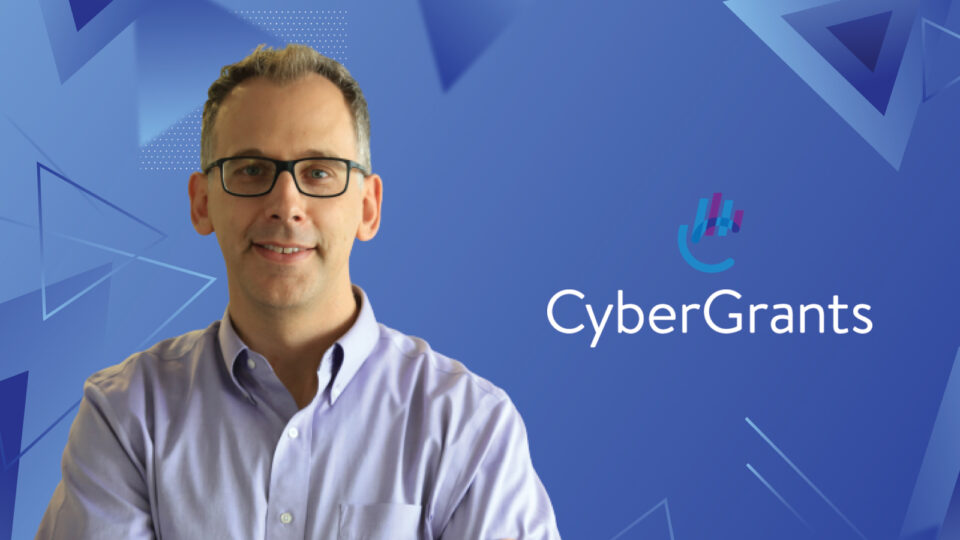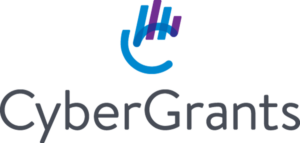“Grants Management is driven by improving the application and review workflow, and increasing impact.”
Hi Pete, please tell us about your journey in the technology space. What inspired you to start at CyberGrants?
I began my career working on physical infrastructure after engineering studies in college. Within that role, I quickly began to acknowledge the potential impact of digital and internet technologies, realizing opportunity for growth within this emerging industry. Because of this, I’ve been working with clients and markets for over 20 years to design and build purpose-built software applications, processes, and analytics. With that experience and drive to work with this type of technology, I decided to join CyberGrants about 4.5 years ago. I was inspired by 3 things when I joined the organization – The mission of the company and their CSR software segment, the work CyberGrants’ clients were doing and had the potential to do (i.e., the scale and reach of our clients), and all of the CyberGrants team members I met were passionate about their work, and more importantly, each other.
Tell us how your product development plans evolved during the pandemic? Any critical issues that you specifically addressed during the lockdown phase that helped you better understand your customers and teams?
It’s a great question, and one that continues to unfold. First, relationships with clients are tested and our ability to move and shake with our clients is imperative. In the first few weeks of COVID we were spinning up new programs at an incredible rate, then just weeks later, we were doing the same for racial justice. The working relationship we have with our clients is vital, and we continue making investments to increase our clients’ ‘agility’ through technology, processes, and our people.
We’ve certainly learned and adapted our organization over the past year and a half. Moving from a near full ‘in-office’ culture to a fully remote workforce in the span of about 10 days, I think we’ve all learned that work/life balance is more appropriately work/life integration, and I feel our teams have more of that ‘integration’. One very important note is that we’ve been able to open up access to new talent outside of our office’s region, allowing us to hire remarkable and diverse people from various parts of the country. Because of this, we’ve been able to build robust teams that can provide the best possible resources and services to our clients who are so passionate about the work we do together.
Read More: ITechnology Interview with Daniel Graves, CTO at Delphix
Can CSR be automated? To what extent? What are the advantages of using technology for CSR management?
Well, yes and no. First, one must always ask what ‘should’ be automated. Just because something can doesn’t mean it should. CSR strategy is best when it is aligned to the business strategy, looking specifically towards things like causes, areas of impact, geography, stakeholder engagement (employees, community, suppliers, board, etc..). That decision process and steering of the strategy simply cannot be automated. However, it can certainly be guided and informed by data-driven insights which is why we’ve built a team and a new offering for analytic insights.
What is already automated can be optimized for the situation, such as the program, stakeholders, or impact. It can make positive impact like streamlining the grants process, as well as donor engagement being able to introduce more learning and exploration of causes and nonprofits. The funds disbursement process must continue to evolve for managing risk and efficiency, in addition to the engagement of nonprofits in the process. There are many more use cases for automation within CSR management, but technology as a whole has plenty of other advantages such as data-driven insights or consistency of execution across programs and business lines. Technology and automation can also free up more time for internal staff to put more focus towards strategy, comms, and analysis to make more impact, in additional to easing the administrative burden of nonprofits in the process.
Tell us more about your “impact to giving” ratio principle? Why should corporates focus on this ratio?
It ties back to my points above. There must be a focus on data driven decision making that creates more efficient processes for all and more resources to the point of impact. This is undoubtably a major focus in the industry right now – rightly so, and one I expect to increase in line with environmental, social and governance (ESG) investment, commitments, and compliance. However, there must also be a focus on employee programs, like skills-based volunteering and workplace giving, interwoven with impact and research grant programs for a multi-faceted approach that is aligned with strategic nonprofit partners. It takes all parties to come together and drive impact, not just the organization, and businesses should give employees incentives to engage in giving programs so they can feel the value of making positive change. Simply put – increasing the impact per dollar given is a multi-threaded focus.
Looking forward there’s much to do around impact as ESG reporting, and focus, is rightfully on the rise. We believe a focus on increasing impact is a strategic imperative for this ecosystem – we hear it from our nonprofit council and partners, our clients, and other market players, to figure out what to measure, what tactics drive more impact, validate that impact, and more.
How should companies use technology and social intelligence to extend beyond the conventional definition of CSR and corporate philanthropy?
Certainly, the conventional view of CSR as something the company does is accurate but limiting. We see a few things here that extend beyond the traditional scope of CSR. There’s opportunity to engage more ‘stakeholders’ in the CSR process, like community members, consumers, suppliers, board members, and investors. Social intelligence can also be used to build strategic nonprofit partnerships with companies and foundations. Businesses can also focus on the ecosystem working more symbiotically, not just transactionally, in addition to expanding the ‘resources’ used in philanthropy from mostly money and time – to product, digital and physical assets, and more.
Tell us more about your Grants Management and what technology drives its performance?
Grants Management is driven by improving the application and review workflow, and increasing impact. Our client’s grantmaking range from highly complex to simple – granting money, time, and product. We focus on applying technology to increasingly enable a more efficient process (for grantseekers and makers) that elegantly manages complexity. For example, distributing a grant internationally requires an organization to follow different review and approval rules (i.e. business unit, country, product line) and follow compliance laws in accordance with each country – that’s a lot to manage in spreadsheets or under-functioned grantmaking software. One simple example of improvement is using analytic capabilities to analyze grant approval cycle time – and identify bottlenecks for redesign or r******. That example exists across decision making, analysis, communication, disbursements and impact measurement for our grantmakers. And… It extends to projects we have underway to simplify the process for the grantseeker – reducing administrative time on grants to enable more time serving their mission and constituents.
Read More: ITechnology Interview with Victoria Phillips, COO at Avionos
Do you use/ plan to use AI / machine learning for your product suite?
Yes, but only where it makes sense and adds value. I’ve seen too many AI/ML projects that were technology led and seeking value, rather than being implemented knowing it would bring value. We see a very real opportunity to use technology like AI to add value for donors, nonprofits, and CSR administrators. So far, our technology investments have created a foundation for us, but it’s important to note that adoption of technology is a journey. I believe (most of the time) that a crawl / walk / run journey is valuable for new technology to ensure a focus on business value. You start, get value quickly, and adapt overtime to consistently expand to increasingly deliver value for client needs.
IT challenges are part of digital transformation journeys. How do you address critical IT issues that come up when collaborating with your customers? Any unique experience that you wish to share with our readers who could be interested in a CSR technology?
We put the client first. Simple. CSR technology exists in an ecosystem, and we have and will continue to invest in this – such as integrations to corporate applications and social platforms, security infrastructure, privacy, user experience, and more. One area we’ve been really focused on is analytics – many of our clients, of varying sizes, did not have access to world-class analytic (data warehouse / modeling / visualization) technology and/or didn’t have staff to take advantage of it – so we’ve built a world-class capability for our clients to leverage.
I would always guide clients to think about (a) where they are going, not just where they are – maintain flexibility (b) issues are going to arise – working relationships with your technology partners are important (c) start simple and expand as you learn/ evolve.
What kind of talent are you looking to hire to expand your market share?
We are a mission driven company, so we are looking for people that are aligned to what we are after – enabling our clients to increase their impact and make incredible things happen. This kind of talent could be in product development, sales, marketing, finance, HR, etc. It’s truly a companywide mission and all roles embody our mission as an organization. Our customer facing team in sales, customer success, and onboarding support our clients – be they new, or with us 20 years. The product team made up of developers, engineers, UX/design professionals, and product managers are expected to have deep empathy skills and be infrastructure/architecture wizards.
It’s also important to note our partners as we don’t exist alone. We have some truly amazing and inspiring partners in technology, operational services, and others. As we expand our offerings and our company, we’ll be looking for more partners in targeted areas.
Read More: ITechnology Interview with Sounil Yu, Chief Information Security Officer at JupiterOne
Your favorite podcast in the recent:
Funny question! I drive far less now than I used to so my podcast variety is way down. I’m a big fan of Rich Roll because of the depth and how he interviews guests. I just wrapped up a podcast with him and Paul Hawken on practical realities of climate change and real/viable solutions that make a positive environmental, societal, and economic impact. I’d highly recommend checking it out!
Thank you, Pete! That was fun and we hope to see you back on itechnologyseries.com soon.
[To participate in our interview series, please write to us at sghosh@martechseries.com]
Pete loves helping team members achieve career objectives and enabling clients to reach business objectives. He works with clients, the CyberGrants team and industry experts to develop and lead the future of the company’s products and drive secure and efficient funds disbursement. In his personal life, Pete has four children — two adopted — and loves the outdoors as a backpacker and fisherman. He also plays a leadership role at his church, marshaling resources for maximum impact in the community.



